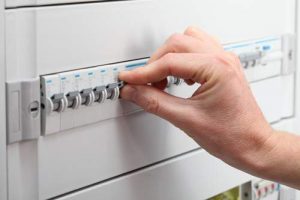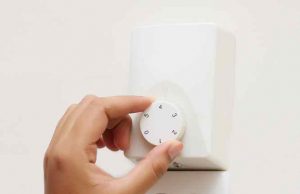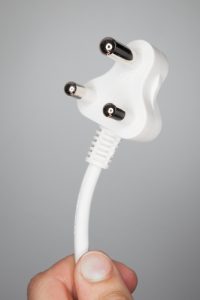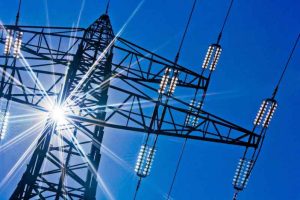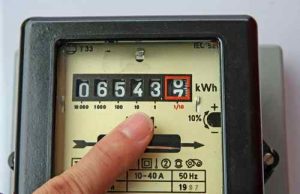Is your house safe from Electrical Fire and Shock?
“With great power comes great responsibility.” I know this line sounds a bit cheesy, and I am sure you would have heard it umpteen number of times. But then when we are talking about “power” or “electricity”, it does make a lot of sense. Quite frequently we come across news of someone dying due to electrical fire or electrocution. One of the primary reasons cited for the same is “short circuit”. Most people brush it off as a one-off incident and do not think if their own house is safe from electric fire and electrocution or not. But electrical safety is a great responsibility that we have for being a consumer of electricity.
Electricity is our best friend if we handle it properly, but otherwise, it can be quite dangerous. It is difficult for humans to visualize the flow of electricity. And that is why we find it very difficult to ascertain the amount of hurt it can cause. We have written this post intending to make a common man understand some simple steps to ensure electrical safety in your house.
Things that you should know about Electric Safety
The main objective behind electrical safety is to make sure that the current does not leak out from its intended path. There are two ways in which the current can leak out: Direct Contact or Indirect Contact. Let’s look at how to block these two:
Direct Contact
Any contact with live wire can be hazardous. It is essential to provide proper insulation to live parts and making sure that these are enclosed properly and there is no opportunity for anyone to come in contact with the wire accidentally. A few items that you need to take care of while setting or change of wiring or addition of equipment in your house are as under:
Cables/wires
When looking for Cables, you should make sure that you buy a cable that is made out of copper and complies with IS 8130 for insulation. Please avoid wires made out of aluminium. There are two types of wires available: Single-Core and Multi-Core, as shown in the image below.
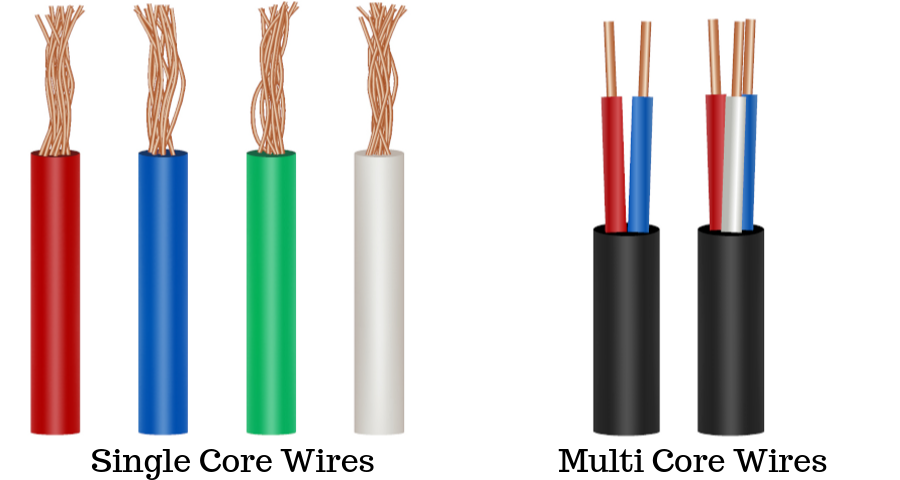
Single-Core And Multi-Core Wires
Usually, single-core stranded wires are the ones used for house wiring. Multi-core wires are used for connection of an appliance with the plug. As shown in the image above, there is no protective sheathing (or black covering in the image above) available in single-core stranded wires whereas the same is given in the multi-core cable to keep all the core together. In any case, the copper conductor is covered with PVC insulation to prevent any current leakage. There is an Indian Standard: IS 694 for the PVC insulation. A PVC insulation is of category C1 if it is fire retardant and C2 if it is fire retardant and has low smoke. Do check for these categories while buying a cable.
The copper conductor inside a wire should be multi-stranded as per clause 5 of IS 8130 – 1984 (as shown in the image below). This is done to provide flexibility. Single strand wires are generally used in the panel wiring where the path of the cable layout is pre-fixed and normally not disturbed.
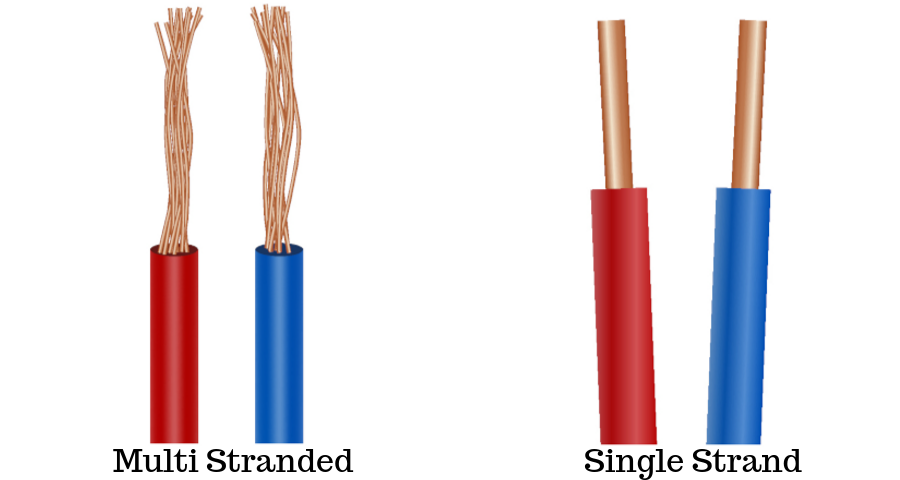
Single and Multi Stranded Wires
The wires dimensions are defined in terms of sq.mm. of cross-section and sizing is determined based on current-carrying capacity. For house wiring, the sizing is generally in the range of 1 to 6 sq.mm with current-carrying capacity determined in accordance with IS 3961 (Part V)-1968 as under:
| Size (in sq.mm.) | Current carrying capacity in Amp. | DC Resistance in ohms/km at 20 degree | Outer diameter including insulation in mm |
| 1 | 12 | 19.50 | 2.44 |
| 1.5 | 16 | 13.50 | 2.66 |
| 2.5 | 22 | 7.98 | 3.27 |
| 4 | 29 | 4.95 | 3.99 |
| 6 | 37 | 3.3 | 4.52 |
As a general principle, all light/fan circuits are wired with 1.5 sq.mm. and power plugs 6/16A with 4 sq.mm. cable. When a cable or wire is installed, make sure that your electrician follows a colour code: RED, BLUE, YELLOW for phase, BLACK for neutral and GREEN for earth wire. Such coding helps in avoiding any unsafe issue when a modification in wiring is called for.
Some brands market that their cables/wires saying ‘this wire save electricity‘. The power loss in a cable depends on the resistance of the wire and the resistance of a wire depends on the cross-sectional area of the wire. So ideally, it should be the same for all copper wires with the same cross-section and as detailed in the Indian Specification. So we at Bijli Bachao are not convinced with the message and such advertisement shall not influence your purchase decision.
Here are some good wires (1.5 sq mm) available on Amazon:
Switch and Socket
Switch or Socket is another important but weak link in the wiring system of any installation and you need to take while buying and installing the same in your house. Being switched ‘on’ and ‘off’ regularly, they are vulnerable to failure, especially weakening of the contact resulting in heating and insulation failure. The sockets and switches in India are manufactured as per Indian Standard IS 3854:1997, so when you buy one, make sure that this standard is mentioned on the box.
With very large manufacturers of switch and socket and printing IS mark on it, this alone cannot be a relied upon fully. One of the tests to make sure it follows the standards is to try to ignite it and see to it that it burn with a very low flame and the same not spreading very fast. The other thing one can test himself is the workmanship and compare it with a branded product since to achieve this, it requires a large investment. For this product, it is always advisable to go for branded and popular make.
You must have observed that the earth pin is thick and long, and this is to ensure that the earth terminal of the appliance is connected first to avoid any shock to the person touching the appliance. Similarly, it is the earth pin shutter which opens first and leading to the opening of other shutters. Without the earth pin shutter pushed, the other pin will not open. You can further read on some tips for plug safety on this link: Why Use 3-pin plugs for electrical safety?
While selecting sockets, make sure that you go for sockets with a shutter so that kids to not accidentally put their fingers inside it. This is necessary for socket installed near the floor.
Here are some good sockets on Amazon:
You can further read on some tips for plug safety on this link: Why Use 3-pin plugs for electrical safety?
Box to house Switch and Socket Panel
Indian Standards have section IS 5133 which is meant to provide specifications for the box to house switch and socket panel. Please make sure that you buy a Steel or GI Electrical box. In case, someone advises you using a different type of Box, but always remember that for electrical safety, use Steel/GI Box since in case of a fault it will result earthing and tripping of MCB.
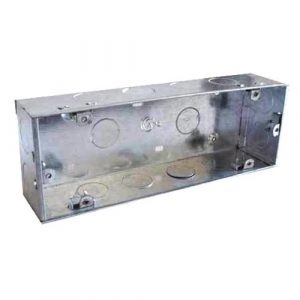
GI-Box
Conduit
For mechanical safety, wires shall not be laid in open. Use a rigid pipe or flexible/non-flexible metallic pipe for laying wire in the open. For concealed wiring, there is no likely hood of any mechanical damage and also if there is any smoke, the fire will not spread due to starvation of oxygen. Besides this, concealed wiring also provides aesthetic. You will need a conduit to do the same. Always go for a conduit which is in accordance with Indian Standards:
Non-Metallic: Rigid: IS 2509-1974 and 3419-1989; Flexible: IS 9537 (Part 5) 2000
If a flexible conduit is required for wiring in the open, always use metallic flexible conduit.
Cable joints
A common practice that is very common with the electricians in India is to join cables by twisting the strands and then insulate with a tape. This practice is prone to risks and hazards. These days you can get cable connectors in the market that can be used to join cables safely. You can also use a heat-shrinkable sleeve or a heat-shrinkable sleeve with solder to provide extra insulation to make it safe. Some of those products on Amazon are listed below:
The purpose of all these products is to ensure that with the loss of adhesion of adhesive pipe, the joint should not become naked and no one comes in direct contact with electricity.
Indirect Contact
Even after taking all the measures, a person may come in contact with a live wire accidentally or through a current leakage somewhere in the system. To protect injury through these reasons, following are the features of the protection system in any electrical installation.
Fuse
A fuse is meant to provide protection from short and overload current. It is the best and most reliable mode of protection if you install one with the right rating (based on the connected appliance and their current usage). However, a fuse that is blown needs replacement, and this can cause inconvenience to some people. And to avoid that inconvenience, one can use an MCB (Miniature Circuit Board). But please note that MCB is good if used at the distribution board i.e. primary protection. After the energy meter, for secondary protection, it is always good to use a fuse (almost no more available in the retail market since not used in new installation) or cartridge fuse of the right ratings instead of MCB because the reliability of protection is best achieved by a fuse. Here is an example of cartridge fuse available on Amazon:
MCB
MCB or Miniature Circuit Breaker is another good tool to protect from short and overload current. MCBs are very popular these days, and it is difficult to imagine a house without it. MCBs are manufactured in accordance with IS 13032:1991. MCBs are provided at the distribution and sub-distribution board. The standard sizes of MCB for load vs rating are 1-4A/6A, 6A/10A, 16A/20A, 20A/25A, 25A/32A, 32A/40A etc. You should seek the assistance of house wiring expert to help you to find the right size as per your requirements. They are available in two variants: Type B and Type C. If you have an appliance with a motor and you want to use MCB for it, then you should use Type C variant. For all other resistive loads (like lights, Fans, TV, etc) you should use Type B. Here are some 10 Amp MCBs available on Amazon:
ABB is a pack of four and Schneider is a pack of two.
RCCB/RCBO
RCCB or Residual Current Circuit Breaker is one of the best protection for your house from electric shocks caused due to leaking current. MCB detects short circuit or overload but RCCB detects minute current leakage. Thus it is essential to have an RCCB in a house. RCCB cuts of the electricity supply whenever it detects current leakage beyond a certain point. RCCB manufacturers recommends 30 mA sensitivity for household loads. Such sensitivity irks when there are spurious tripping without any obvious fault. Most of the user gets the RCCB bypassed to avoid this. Troubleshooting for RCCB tripping is somewhat painstaking. In case you are unable to take pain in identifying the defect when a circuit trips due to 30 mA sensitivity, it is better to go for 60 mA instead of bypassing or not providing at all. Because of this, we usually suggest going for an RCCB with a sensitivity of even up to 60 mA sensitivity.
Now the latest development is RCBO which is a combination of RCCB and MCB that is providing protection towards short circuit as well as current leakage.
Here are some RCCBs on Amazon with 63Amp rating and 100 mA sensitivity:
You can read more about RCCB on this link: Why is RCCB necessary for your house?
Earthing
Earthing (also known as grounding in the US) is an essential aspect of electrical wiring in a house. In layman’s terms, Earthing acts as a “drainage” for leaking current. All appliances should have proper earthing. It is done by connecting a wire to the metallic portion of the device, and that wire goes in the top (thick) pin of a three-pin plug. Every house should be wired in such a way that there is earth wire running throughout the house. The earth wire should collect leakage current from any part of the house and return it back to its source through the earth. It is essential to have proper earthing in your house. Make sure you get it done properly when you are setting up your house. Avoid renting a house which does not have good earthing.
Here are a few more articles that you can read on Earthing, Electrical Protection and Fire Safety:
‘EARTHING’, a must for every one to understand its importance for Electrical Safety
Electrical Protection, Fire and Safety
About the Author:
Mr Mahesh Kumar Jain is an Alumnus of the University of Roorkee (IIT Roorkee) with a degree in Electrical Engineering who has spent 36 years serving the Indian Railways. He retired from Indian Railways as a Director of IREEN (Indian Railways Institute of Electrical Engineering) and has also served as Principal Chief Electrical Engineer at many Railways. He has performed the responsibility of working as Electrical Inspector to Govt. of India. Mr Mahesh Kumar Jain is having a passion for electrical safety, fire, reliability, electrical energy consumption/conservation/management, electrical appliances. He currently serves as a consultant at Nippon Koi Consortium in the field of power distribution and electric locomotive. More from this author.


